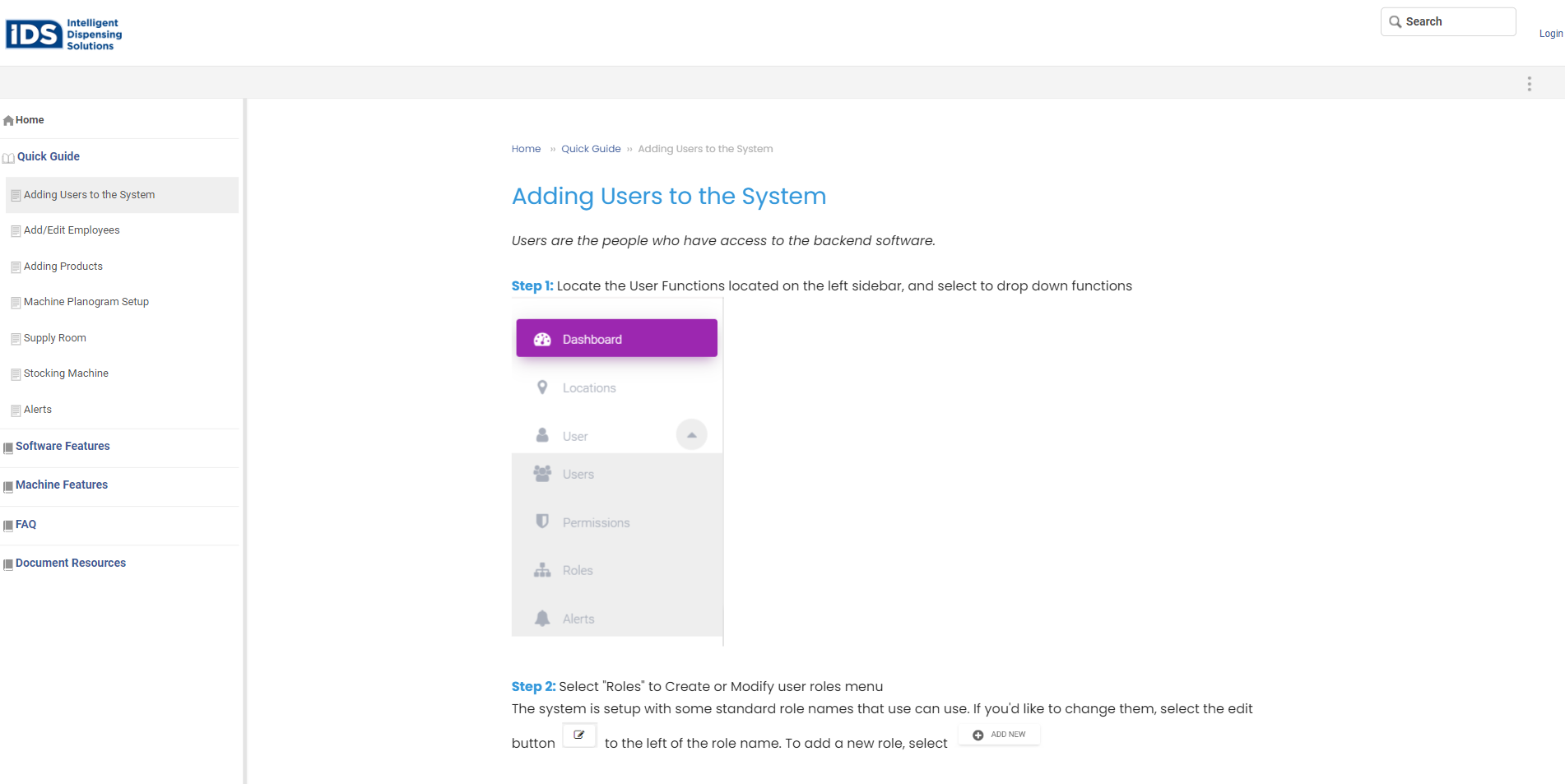
Have you ever stared hopelessly at a new gadget or piece of technology, unsure how to use it? Well, we have all been there!
Thanks to user manuals and user guides, the confusion and frustration are no more. They offer step-by-step instructions on how to assemble, operate, and troubleshoot products.
However, there has been some confusion between a ‘user manual’ and a ‘user guide.’ Are they the same? Or is there some critical difference between the two?
In this blog, we will explore the key difference between user guides and user manuals, the role of user manual and user guide, and understand why your business needs them.
What Is a User Manual?

A user manual is a document that provides instructions, information, and guidance on how to use a product or system.
It is a comprehensive reference tool for users, providing detailed explanations, step-by-step procedures, and illustrations to help them understand and operate the product effectively.
User manuals usually cover a wide range of topics related to the product, like the following:
1. Installation: Instructions on how to set up and install the product, including any required software or hardware.
2. Operation: Information on how to use the product’s features and functions.
This includes details on the controls, buttons, menus, and interfaces, as well as explanations of any unique modes or settings.
3. Maintenance: Guidance on how to properly care for and maintain the product to ensure its optimal performance and longevity.
This may include instructions on cleaning, storage, and routine maintenance procedures.
4. Troubleshooting: Troubleshooting tips and solutions for common issues or problems that users may encounter.
User manuals often provide a troubleshooting section that helps users identify and resolve issues independently before seeking further assistance.
5. Safety precautions: Important safety instructions and warnings to ensure the user’s well-being and prevent accidents and damage.
This section may cover topics such as electrical safety, handling of hazardous materials, and precautions related to the product’s usage environment.
User manuals are shared with various products and systems like:
1. Electronic devices: Smartphones, tablets, cameras, laptops, and home appliances.
2. Software applications: Office suites, graphic design software, content management systems, and video editing tools.
3. Machinery and equipment: Industrial machinery, power tools, medical devices, and automotive systems.
4. Consumer products: Toys, home entertainment systems, kitchen appliances, and fitness equipment.
Read More: Best Online User Manual Software & Tools
What Is a User Guide?

A user guide is a document that provides instructions, guidance, and information on how to use a specific feature, function, or task of a product.
It is usually more focused and concise than a user manual, providing quick and easy reference for users who need specific instructions related to a particular aspect of the product.
User guides are created to help users understand and perform specific actions or achieve specific goals using the product. They could include step-by-step instructions, tips, and explanations to guide users.
Some examples of user guides are:
1. Software feature guides: These guides provide instructions on using a specific feature or capability of a software application.
For example, a user guide on how to create and format tables in Microsoft Word or how to apply filters and effects in Adobe Photoshop.
2. Product configuration guides: These guides provide instructions on configuring specific settings or options for a product. For example, a user guide on setting up network settings on a router or how to customize display settings on a smartphone.
3. Workflow or process guides: These guides outline step-by-step procedures for performing complex tasks or workflows. For example, a user guide on how to set up an email marketing campaign using a specific email marketing platform or how to create a financial report in a spreadsheet application.
4. Troubleshooting guides: These guides provide instructions on how to diagnose and resolve common issues or problems related to the product. For example, a user guide on how to troubleshoot network connectivity issues on a computer or how to fix a paper jam in a printer.
Read More: Best Process Documentation Tools & Software in 2024
User guides may include screenshots, diagrams, or examples to enhance the understanding of the instructions.
User guides are shared with various products and systems like:
- Software Applications: User guides assist users in installation, navigating the interface, and understanding various features and functionalities.
- Consumer Electronics: Devices like smartphones, cameras, and home appliances come with user guides that guide users in setting up the device, understanding features, and troubleshooting common issues.
- Automobiles: Car manufacturers provide user guides for vehicle operation, maintenance, safety instructions, and information on controls and warning lights.
- Medical Devices: User guides are vital for medical devices such as glucose meters, blood pressure monitors, and CPAP machines, providing instructions on usage, maintenance, and result interpretation.
- Online Platforms: Web-based platforms, including social media sites and content management systems, usually have user guides or help sections guiding users on account setup, privacy settings, and other functionalities.
Read more: How to Create a User Manual For Web Application
User Manual vs. User Guide: Key Differences
Both user manuals and user guides provide users with instructions and information on using a product. However, they differ in their purpose, content, and level of detail.
User manuals are extensive documents that provide detailed information on the product or system as a whole.
They cover various topics, such as installation, operation, maintenance, troubleshooting, and safety precautions. User manuals are usually longer than user guides and provide more in-depth information and explanations.
Some examples of user manuals include:
- The iPhone manual: This document includes information on how to set up and customize the iPhone, use the device’s various features and functions, troubleshoot common issues, and more.
- The user manual for a new car: This document provides information on operating the car’s various systems and components, including the engine, transmission, infotainment system, and safety features.
On the other hand, user guides usually are shorter and more focused documents that provide instructions or guidance on specific aspects or tasks related to the product.
They may cover specific features, functions, or tasks and provide quick and easy reference for users.
Some examples of user guides include:
- The quick start guide for a DSLR camera: This document provides information on how to set up the camera for first-time use, including inserting the battery and memory card, attaching the lens, and taking the first photos.
- The user guide for a specific software feature: This document may provide step-by-step instructions on using a specific feature of a software application, such as creating a pivot table in Excel or applying a filter in Photoshop.
Create Professional User Manuals
Enable product understanding & customer self-service with extensive user manuals & guides
Why Do Businesses Need User Manuals?
User manuals cater to users who seek an in-depth understanding of the product, making them ideal for complex devices or software.
Read More: Create a User Manual Online for Free
The following are the reasons why businesses need user manuals:
Product understanding
User manuals enable users to understand how to use a product or system properly.
By providing extensive instructions and information, user manuals ensure users can effectively and safely operate the product. This leads to a better customer experience, reduces user frustration, and minimizes the risk of user errors or accidents.
Read More: Create a User Manual in Word
Customer support
User manuals are excellent self-help resources for users. They provide troubleshooting instructions and solutions for typical issues, reducing the need for customers to contact customer support.
This saves time and resources for businesses and improves customer satisfaction.
Compliance and safety
User manuals often include essential safety instructions and warnings.
By providing detailed guidance on proper usage and safety precautions, businesses can reduce the risk of accidents, injuries, and potential legal issues.
Brand reputation
A thoughtfully created user manual helps show a brand or business in a positive light. It shows that the business cares about its customers, values their experience, and strives to deliver a high-quality product.
A user manual that is easy to understand and use enhances the overall brand reputation and customer perception.
Why Do Businesses Need User Guides?
User guides are focused on providing users with just enough information to start using the product effectively without overwhelming them.
The following are the reasons why businesses need user guides:
Enhanced user experience
User guides are created to provide focused and specific instructions for using particular features or functions of a product.
By providing quick and easy reference material, businesses can help users achieve their desired tasks or goals more efficiently and effectively. This improves the user experience and satisfaction.
Efficient training and onboarding
User guides can also serve as effective training materials for new users or employees. By providing step-by-step instructions and explanations, user guides streamline the onboarding process and help users become proficient in using a particular feature or function.
This reduces the time and resources required for training and ensures consistent and accurate product usage.
Differentiation and competitive advantage
Well-designed user guides can help businesses stand out from the competition. By providing clear and concise instructions on specific features or tasks, businesses can demonstrate the unique capabilities and benefits of their products. This can give them a competitive edge in the market.
Ready to Create Insightful User Manuals and Guides?
User manuals and user guides are crucial in helping businesses provide clear instructions and support for their products. Both help enhance the user experience, improve customer satisfaction, and build a strong brand reputation.
While user manuals are more comprehensive, providing in-depth technical information and troubleshooting details, user guides are usually more concise, offering step-by-step instructions for users to grasp essential functionalities and navigate a product with ease.
ProProfs Knowledge Base is a robust tool that helps businesses create error-free and insightful user manuals and guides. With its AI-powered, rich text editor and pre-built templates, companies can easily create professional and user-friendly documentation.
It also enables branding and customization, team collaboration with internal comments and user-based roles, and provides smart analytics into user experiences.
FREE. All Features. FOREVER!
Try our Forever FREE account with all premium features!







